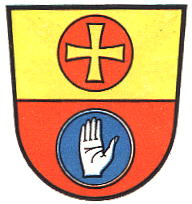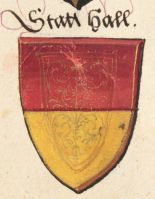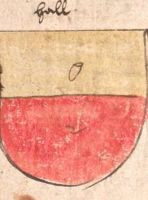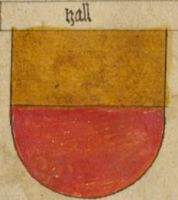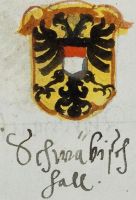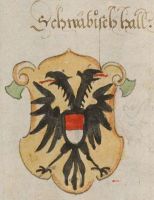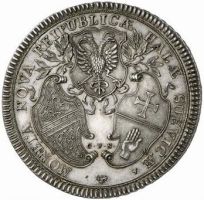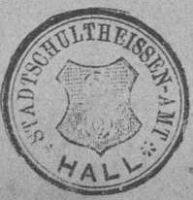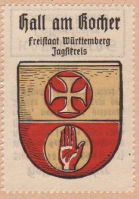Schwäbisch Hall: Difference between revisions
Knorrepoes (talk | contribs) m (Text replacement - "{{de}}" to "") |
Knorrepoes (talk | contribs) m (Text replacement - "|'''English''' ↵| {{blazon wanted}}" to "|'''English''' | blazon wanted") |
||
| Line 16: | Line 16: | ||
|- | |- | ||
|'''English''' | |'''English''' | ||
| | | blazon wanted | ||
|} | |} | ||
Revision as of 09:56, 7 April 2023
SCHWÄBISCH HALL
State : Baden-Württemberg
District (Kreis) : Schwäbisch Hall
Additions : 1970s Bibersfeld, Eltershofen, Gailenkirchen, Gelbingen, Sulzdorf, Tüngental, Weckrieden
| German | In geteiltem Schild oben in Gold eine rote Scheibe, darin ein goldenes Tatzenkreuz, unten in Rot eine silberne Rechthand in silbern bordierter blauer Scheibe . |
| English | blazon wanted |
Origin/meaning
Schwäbisch Hall (originally Hall) became a city in 1276 and was part of Staufen. In 1803 it became part of Württemberg. In the Middle Agres it was one of the most important minting towns. The local coin, Heller, became one of the most important coin-names in Germany. The oldest seal of the city, dating from 1228 already showed the cross and hand of the coins. Three coins were shown on this seal. A later seal, dating from around 1270 showed the two coins as in the present arms (but not placed in a shield). As arms the two coins are used already in the 15th century, as are the colours of the arms. Besides the arms with the coins, sometimes a shield with the imperial eagle was used. The arms are thus not basically changed since the 16th century.
The arms in a 16th century manuscript
The arms by Hupp in the Kaffee Hag albums +/- 1925
Literature: Stadler, 1964-1971, 8 volumes.
